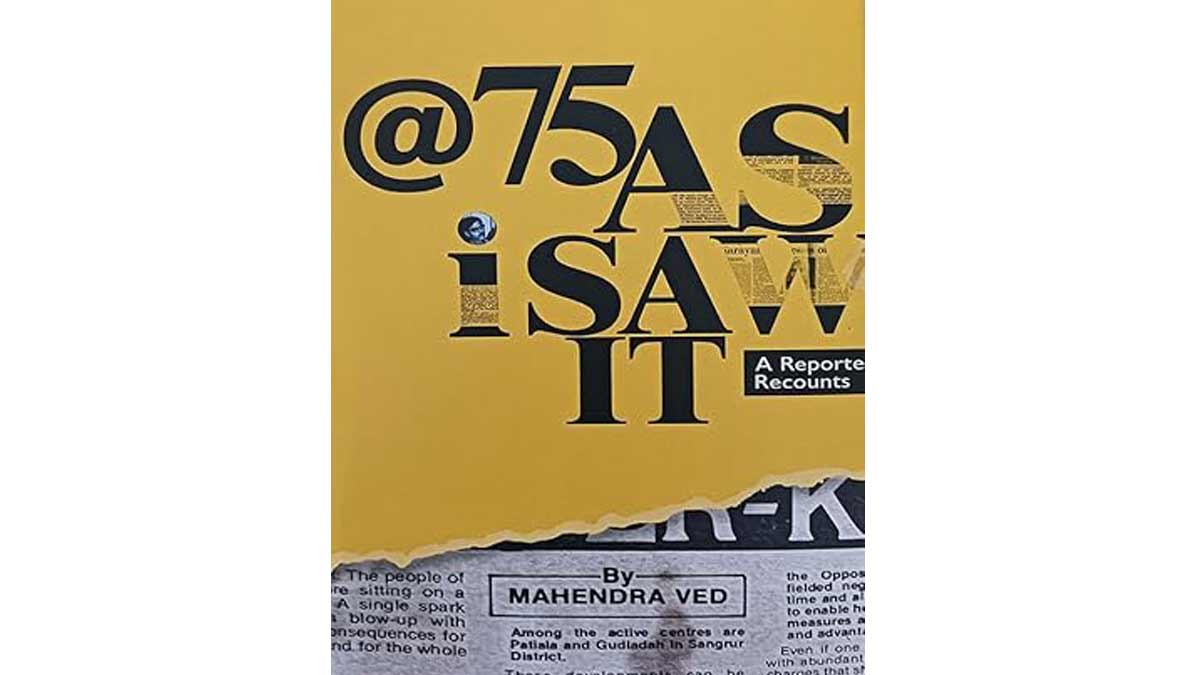“The prime minister’s face lighted (sic) up,” Mahendra Ved writes in his just-released memoir ‘@75 As I Saw it’, “From a distance, standing at the back, I could see her left profile. A lump rose in my throat. I am sure I couldn’t be the only one feeling overwhelmed.”
Ved’s autobiography is a mix of both the personal and the profound, but nowhere in the course of telling his story does this veteran journalist lose sight of the guiding principles of his ‘old school’ journalism — the what, why, when where, who and how and always being the outsider who tracks the news, not the opinion maker who becomes part of the narrative.
Rather quaint, perhaps today’s new age ‘content creator’ might say. Does that make Ved an ‘outsider’ and out of step with the new world where legacy journalism intermingles with multimedia journalism, where learning to get a story on video camera becomes as quintessential as being part of a ‘camp’ (his words). Perhaps just as well, because as he himself notes, he has no complaints since that affords him the luxury of “being an old hand with some credibility”
That also gave him a ringside view of some of the epochal events of the past half century, right from the tumultuous assassination of Bangladesh’s founding father and president Sheikh Mujibur Rehman (the recently ousted Sheikh Hasina’s father) to the first Indian in space (the incident mentioned in the intro where Mrs Gandhi, as well as Ved and everyone in the room with the PM, felt overwhelmed when the first Indian in space, Rakesh Sharma, told her via satellite link up from space that India looked ‘sare Jahan se achcha’, meaning ‘better than the whole world’), to the power struggles on Raisina Hill in the late eighties and early nineties and an inside look at the ‘Dilli Durbar’ and the wheelings and dealings there that shaped the destiny of the nation in its first half century — they all find a space in the book, fresh from Ved’s mind and scribble pad as if it all just happened yesterday.
Of course, it’s also the story of Ved himself, as he recounts his family history, and his early days in Mumbai before moving to Delhi on work (a cute nugget includes a mention of how Devji Bhimji Khetsi from his community in Kutch migrated and started Kerala Mithram in Kochi, whose founding editor was Kandathil Varghese Mapillai, the founder of Malayala Manorama, the parent organisation of ‘The Week’). The personal story is interesting more for its insights into the way life used to be, say, in 1960s and 70s Mumbai or 1980s Delhi than for any inspirational life lesson.
But it is in his recounting of the stories of Indian politics and neighbourhood history that sets the book apart, as he imparts a fly-on-the-wall feel of events as they unfolded in the era before mobile phones, broadcast journalism, let alone podcasts, news portals and influencers irrevocably changed the face of news and news breaks (Ved, after finding out the Sheikh Mujibur Rehman and family were assassinated, had to smuggle out his news story with two passengers flying to India, as regular communication links were blocked).
Part nostalgia and part pure history gold — and not just for today’s media professionals to get a first-hand feel of what the ‘golden era of Indian journalism’ was like, but for everyone to get to read and relive up close the way it all used to be.
@75 As I Saw It: A Reporter Recounts
By Mahendra Ved
India Netbooks
Pages 401
Price: 625 (Paperback)



